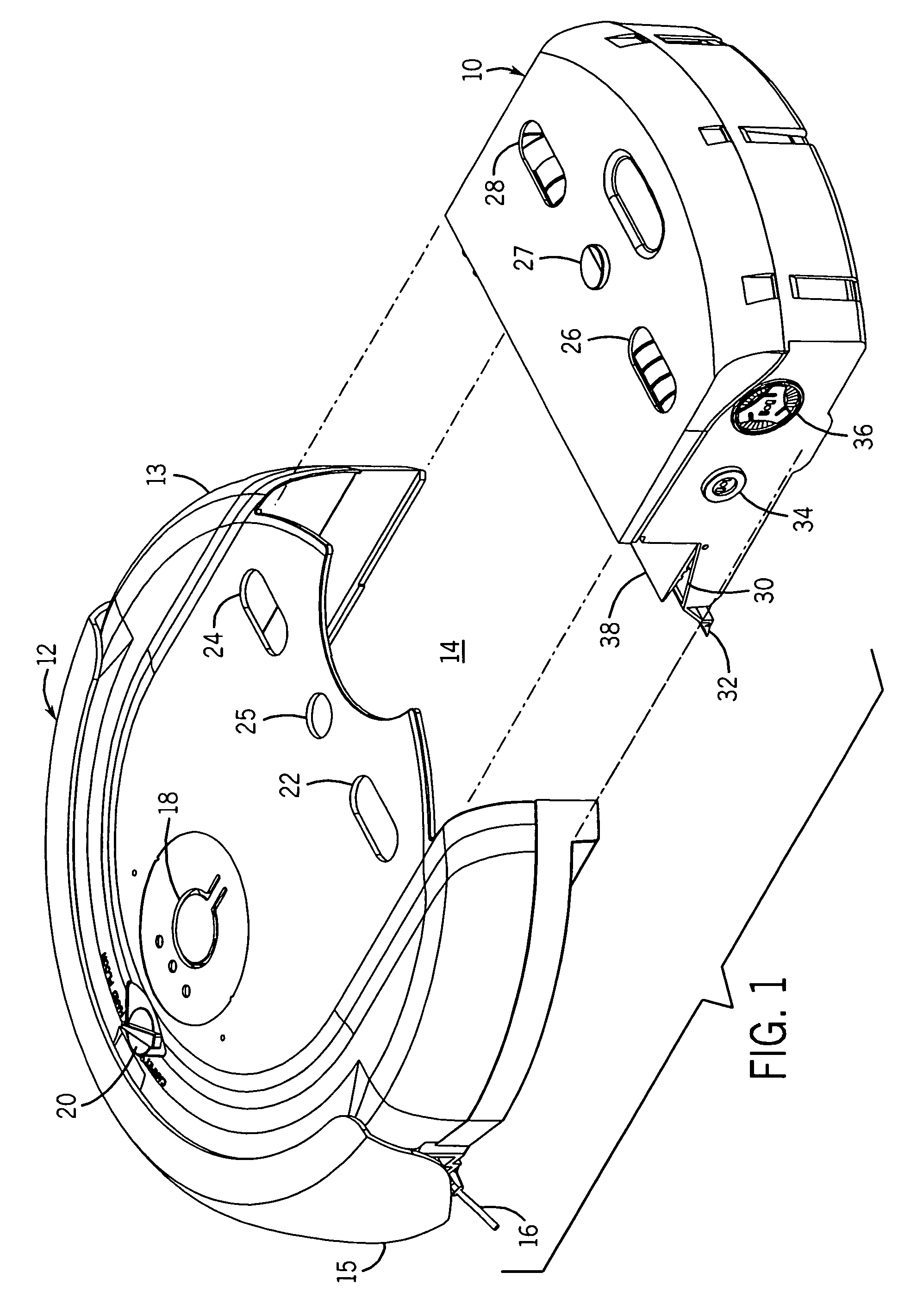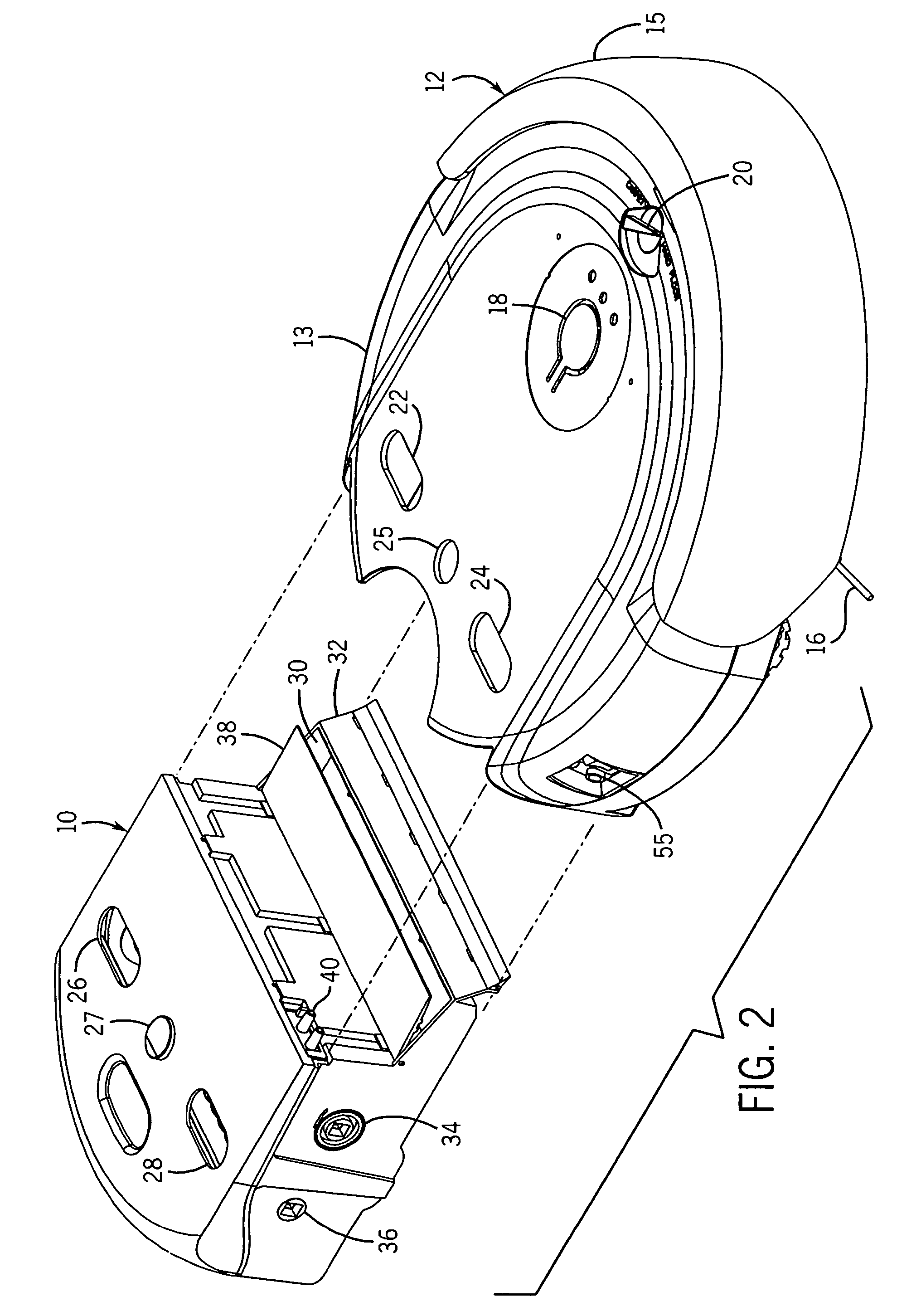Methods to prevent wheel slip in an autonomous floor cleaner
a technology of floor cleaners and wheels, applied in the direction of process and machine control, distance measurement, instruments, etc., can solve the problems of device to remain in place, device to divert, wheel of such devices may slip
- Summary
- Abstract
- Description
- Claims
- Application Information
AI Technical Summary
Benefits of technology
Problems solved by technology
Method used
Image
Examples
Embodiment Construction
[0052]We first describe example autonomous cleaning devices with reference to FIGS. 1-11. This provides examples of environments where the invention of the present invention can be applied. Thereafter, we describe with reference to FIGS. 12-15 specific features of the present invention.
[0053]It should be understood that the present invention is also suitable for use with many other types of autonomous treating devices. Thus, the invention is not intended to be restricted to just cleaning devices, much less devices having the specific attributes shown in FIGS. 1-11.
[0054]Referring particularly to FIGS. 1 and 3, there is a cleaning cartridge 10 suitable to be inserted into a cleaning device 12. The cleaning cartridge 10 has a roll of sheet cleaning material 44 which is provided in a reel-to-reel configuration. A portion of the roll is maintained in contact with the surface below the cleaning device 12 at any given time during operation. A motor 52 is provided in the cleaning device 12...
PUM
 Login to View More
Login to View More Abstract
Description
Claims
Application Information
 Login to View More
Login to View More - R&D
- Intellectual Property
- Life Sciences
- Materials
- Tech Scout
- Unparalleled Data Quality
- Higher Quality Content
- 60% Fewer Hallucinations
Browse by: Latest US Patents, China's latest patents, Technical Efficacy Thesaurus, Application Domain, Technology Topic, Popular Technical Reports.
© 2025 PatSnap. All rights reserved.Legal|Privacy policy|Modern Slavery Act Transparency Statement|Sitemap|About US| Contact US: help@patsnap.com



